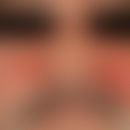Synonym(s)
DefinitionThis section has been translated automatically.
Seeds of the soybean plant, a useful plant from the legume family (Fabaceae or Leguminosae), subfamily Faboideae. It is related to the common bean, peas, lentils, lipins and peanuts.
HMPC: s. Soybean oil, refined, s. Soy lecithin
ESCOP: not processed
Commission E: see soy lecithin
Empirical medicine: post-menopausal complaints
General informationThis section has been translated automatically.
The soybean is an oil plant with a high content of protein, soy lecithin (see also lecithin) and oils. The oil(soybean oil) is usually extracted first, the residual mass (soybean meal or soybean cake) is used as animal feed, but is also used as a meat substitute and milk substitute (cow's milk allergy) in the form of soy milk. Soy products are contained in many foods. The fresh, green pods ("pods") or various protein products (tofu and soy sauce) are used for direct human nutrition.
In medical topicals, soybean oil is present in the following preparations:
Balneum Hermal®, oil bath Cordes®, Oleobal®, sulpho-oil bath Cordes®, furthermore in the formulation of a paraffin-soybean oil bath monographed by the NRF (NRF 11.97.).
Various soy extracts or soy components are used in cosmetic formulations:
- Glycine soja sterol, a mixture of various phytosterols from the soybean.
- Glycine soja flour , the finely grated soy flour obtained from the soybean.
- Glycine soja germ extract the extract from the seedlings of the soybean.
- Glycine soja oil unsaponifiables a soybean oil that remains as an "unsaponifiable" residue when the soybean fatty acids are saponified.
- Glycine soja sprout extract, the extract from the sprouts of the soybean.
- Glycine soja sterol a mixture of various phytosterols from the soybean.
- Various soybean oils
You might also be interested in
Ingredient(s)This section has been translated automatically.
Triglycerides: linoleic acid (48-58%), omega-6 fatty acids, oleic acid, palmitic acid, α-linolenic acid, furan fatty acids, phospholipids(soy lecithin), soy saponins, isoflavonoids, proteins, carbohydrates, vitamins, amino acids, phytohormones.
Estrogenic effect (phytooestrogens): Isoflavones: genistein, daidzein, coumestrol
NaturopathyThis section has been translated automatically.
Serine protease inhibitors are found in the extract of soybeans which are said to have a skin lightening potential (anti-aging). In a double-blind, placebo-controlled study, a lightening effect could be achieved with a soy cream. see under soy plant
Note(s)This section has been translated automatically.
LiteratureThis section has been translated automatically.
- Wallo W et al. (2007) Efficacy of a soy moisterizer in photoaging: a double-blind, vehicle-controlled, 12-week study. J Drugs Dermatol 6: 917-922
Blaschek W (2015) Wichtl-Teedrogens and phytopharmaceuticals. A handbook for the practice. Wissenschaftliche Verlagsgesellschaft Munich. S 300-303




